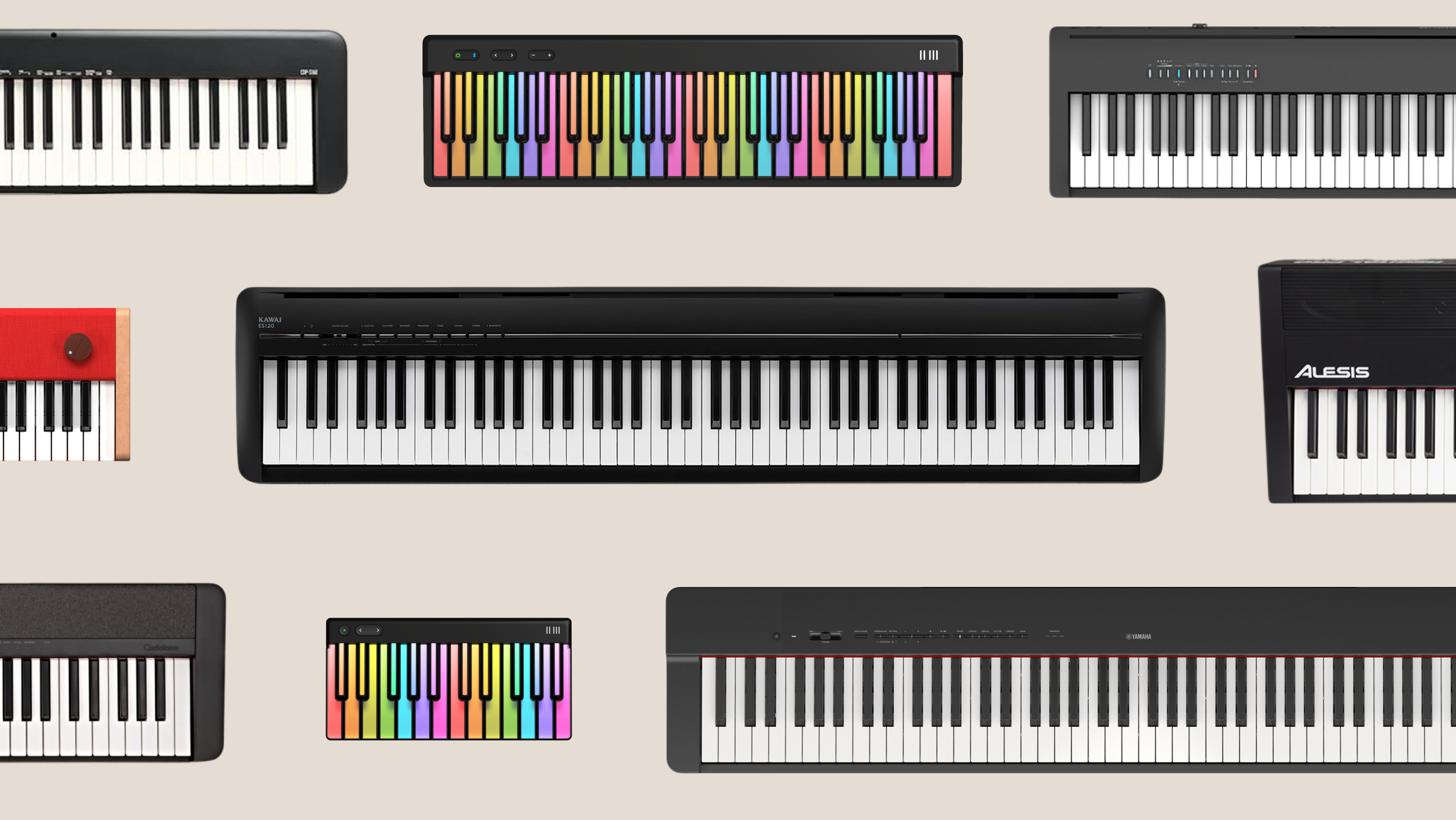Choosing the right MPE instrument: A Guide
ROLI takes a look at some of the best MPE instruments available in 2025
Where to start with MPE?
At ROLI, we are proud to have played a key part in developing and pushing MIDI Polyphonic Expression forward. As one of the most notable sonic innovations since the synthesizer itself, we’ve outlined a detailed history of the format from those early developments to modern releases.
This history is, however, still eagerly writing itself. An incredible range of products are available today which lend themselves differently tactically and functionally, but all aim to inspire in reimagined ways.
Still, most of the time picking an MPE instrument can feel like choosing one for life – and why not? These are instruments that, in one case below, self-define their product as one that ‘’truly shines when you treat the learning curve like a traditional acoustic instrument.’’ MPE is synonymous with limitless discovery and creative stimulation. This article will open the door to some of the companies dedicating themselves to that craft, creating keys to open unexplored corridors of your sound.
Before you buy
If you are interested in exploring MPE instrumentation for the first time, or still trying to find the perfect one for you, start with a few considerations. These will ensure you are picking the right instrument to suit your workflow and musical ambitions.
Define your budget. A realistic budget range and maximum that you would be comfortable investing in a new instrument. If you’re having trouble finding a fit here, don’t worry. We will suggest a few budget-friendly options at the bottom. Each of these are plenty powerful in helping you craft sound in new ways, and more instruments will become available.
Know the features you’re looking for. Most of these instruments are not ones you can find in your average music shop, to play and test out before you purchase. So reading up and watching as many videos as you can get your hands on will be one of the best ways to learn what’s out there. Is it important to you that the instrument reimagines traditional playing surfaces? Do you still want to feel the weight of traditional piano keys under your fingers, or are drum pad surfaces more your scene? Beyond tactile questions, the presence of a built-in interface, specific types of in/out connections or digital display may sway you towards one instrument over another. Returning to what are you dreaming of playing will help narrow down an ever-growing list of MPE instruments.
Know where this instrument will live, or travel to. Some products below are not only more durable or lightweight than others, but notably one option can replace your entire live setup. Some of these instruments will feel so precious that taking them on the road, rather than the safe haven of your studio, might feel anxiety-inducing. Other products are made and marketed to be taken on the road, so ask, where do you dream of expressing yourself through an MPE instrument?
For a comprehensive overview, check out our MIDI keyboards for beginners buying guide.
2025's top picks for MPE instruments
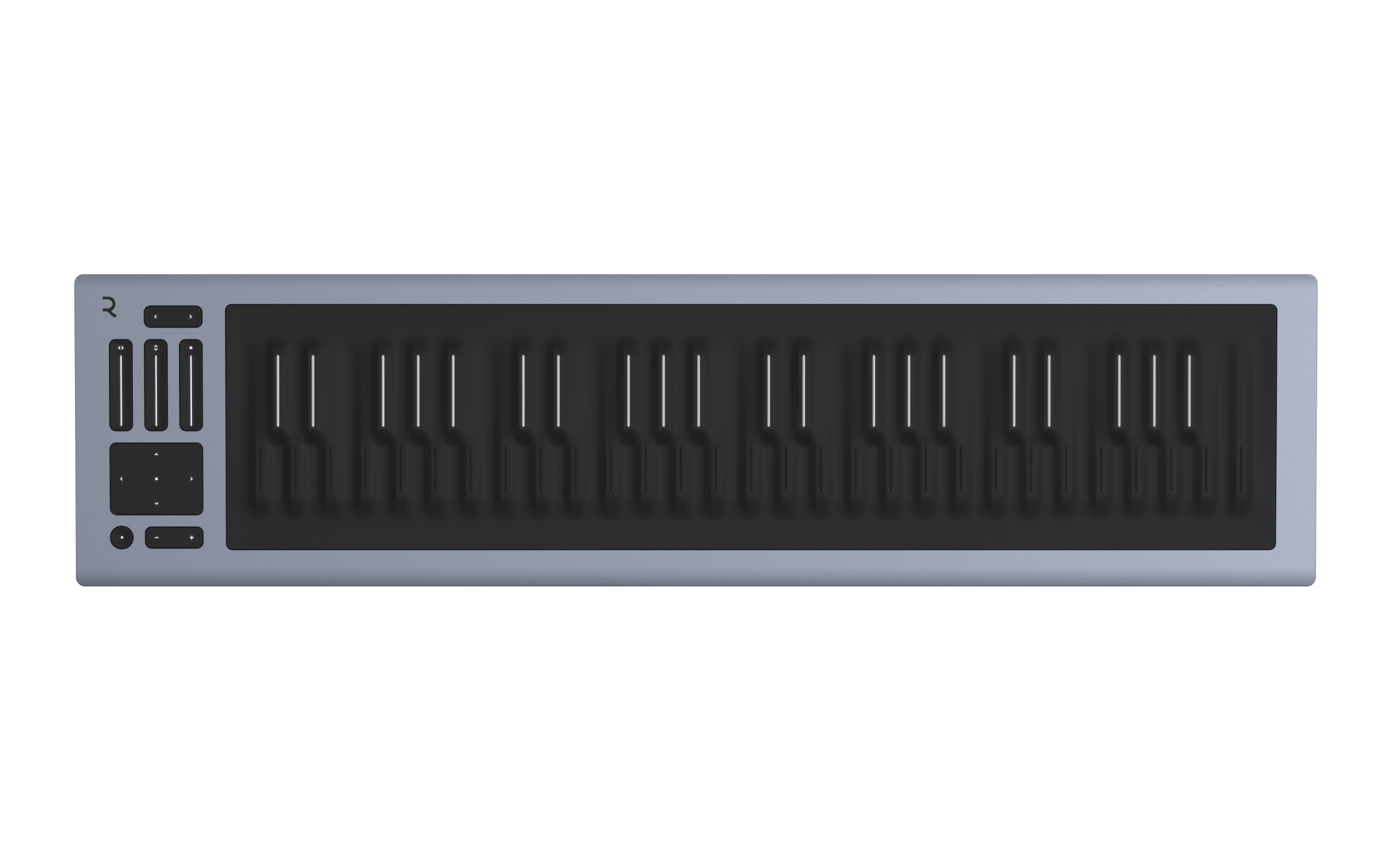
Seaboard RISE 2
Product Info | Price: $1,399 USD
It’s our flagship instrument. It’s the new and improved version of the award-winning original. With sleek precision frets and subtle coloration of playing surface, RISE 2 is optimized for improved playing on dark stages and studio rooms.
It is an instrument with unparalleled expression designed to never leave your side. The ultra-responsive black silicone playing surface ensures that no movement of yours goes undetected. Through ROLI’s Five Dimensions of Touch, expressive playing is possible with more control than other instrument options. These dimensions are mappable to software or physical triggers, the latter primarily being the three sliders, XY pad, and if you have one connected, a foot pedal.
The tactile possibilities of playing allow for a deepened connection with the instrument. The RISE 2 can be your grand piano, your cello, your granular noise machine or any kind of sound imaginable. What makes the instrument so crucial to a creative workflow is its ability to so accurately capture ‘’real’’ instruments you might play, as well as generate other-worldly interactive soundscapes.
Pairing with hybrid soft synth Equator2 and ROLI Studio Suite, RISE 2 is equally powerful in composition and performance. We would say that RISE 2 can realize any sound you can think of, but this wouldn’t reflect its ability to manifest sounds you’ve never before thought of. A 30-day return window is there for you just in case, but we believe this instrument can define your sound like no other.
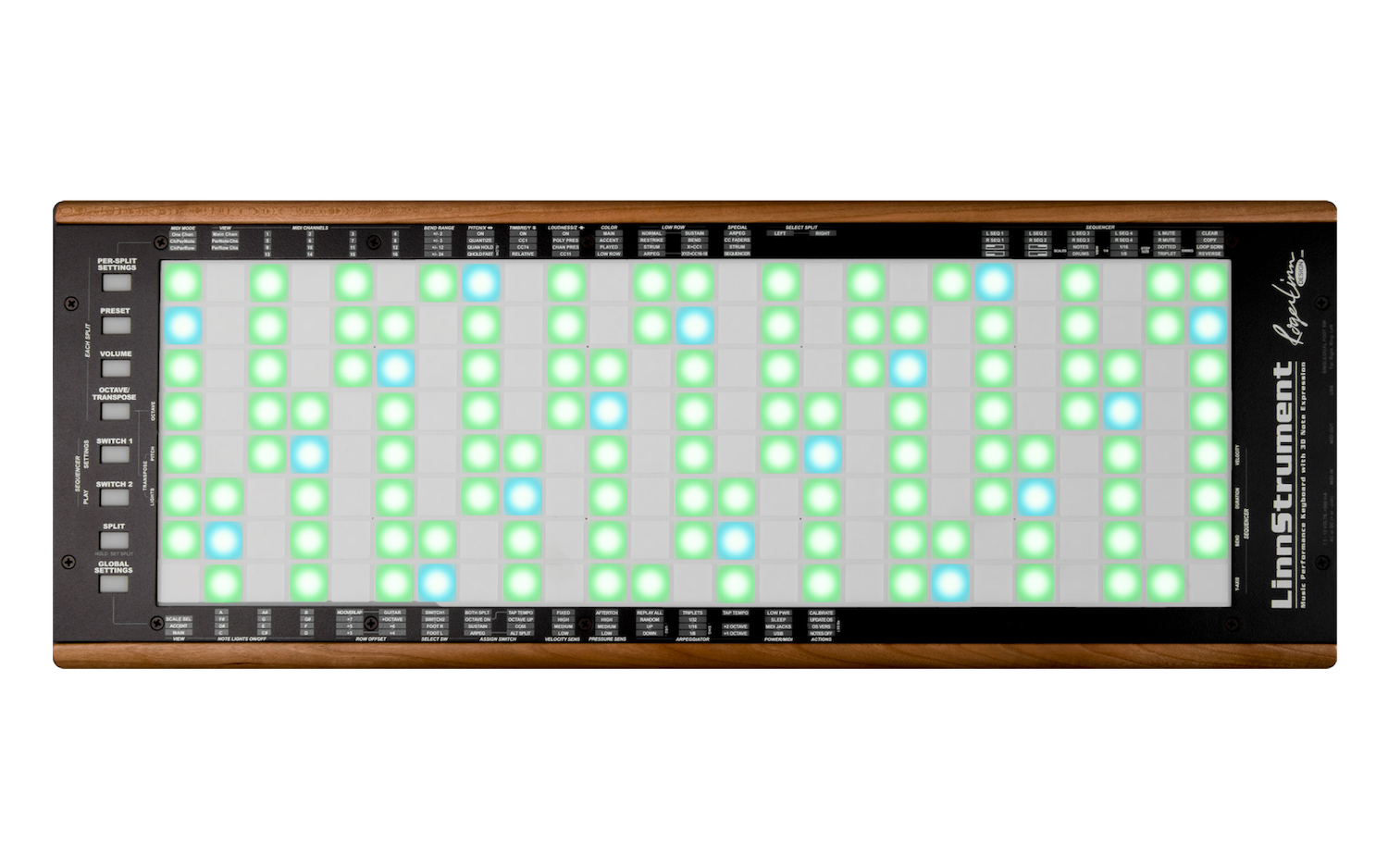
Linnstrument by Roger Linn
Product Info | Price: From $1,099 USD
Roger Linn is one of the original pioneers of MPE. Available in two sizes, this controller is another notable option for those wanting pads over keys. One can argue that it features an even more alternative playing experience to the Push, and maybe the most alternative widely available today.
128+ pads recognize five gestures similar to a RISE 2. By using pressure, pitch slides, Y-axis, note on, and note off, Linnstrument makes for quite the range of playing options before even exploring the presets.
If you read up on the instrument, you might notice that there are only 4-5 octave ranges depending on model. Some quick math might lead to questioning how that’s possible with so many pads. This is because each row of the Linnstrument is laid out as a default with 5 semitones between each pad. Each row will operate with this interval, or the interval you set instead. This approach allows for a dynamic style of playing that will be familiar to any player of a fretted instrument. Just like a bass, a significant number of notes, and specifically octaves, will be duplicated. It is the position of those notes, how the player can access them more conveniently than on a piano roll surface, which allows for a uniquely dynamic playing style. This also allows for easier memorization of keys, as like a guitarist would with barre chords or scale patterns, Linnstrument players can think less about the technicalities of accidentals and more about patterns.
For more on compatibility and getting the most out of the instrument, start here.
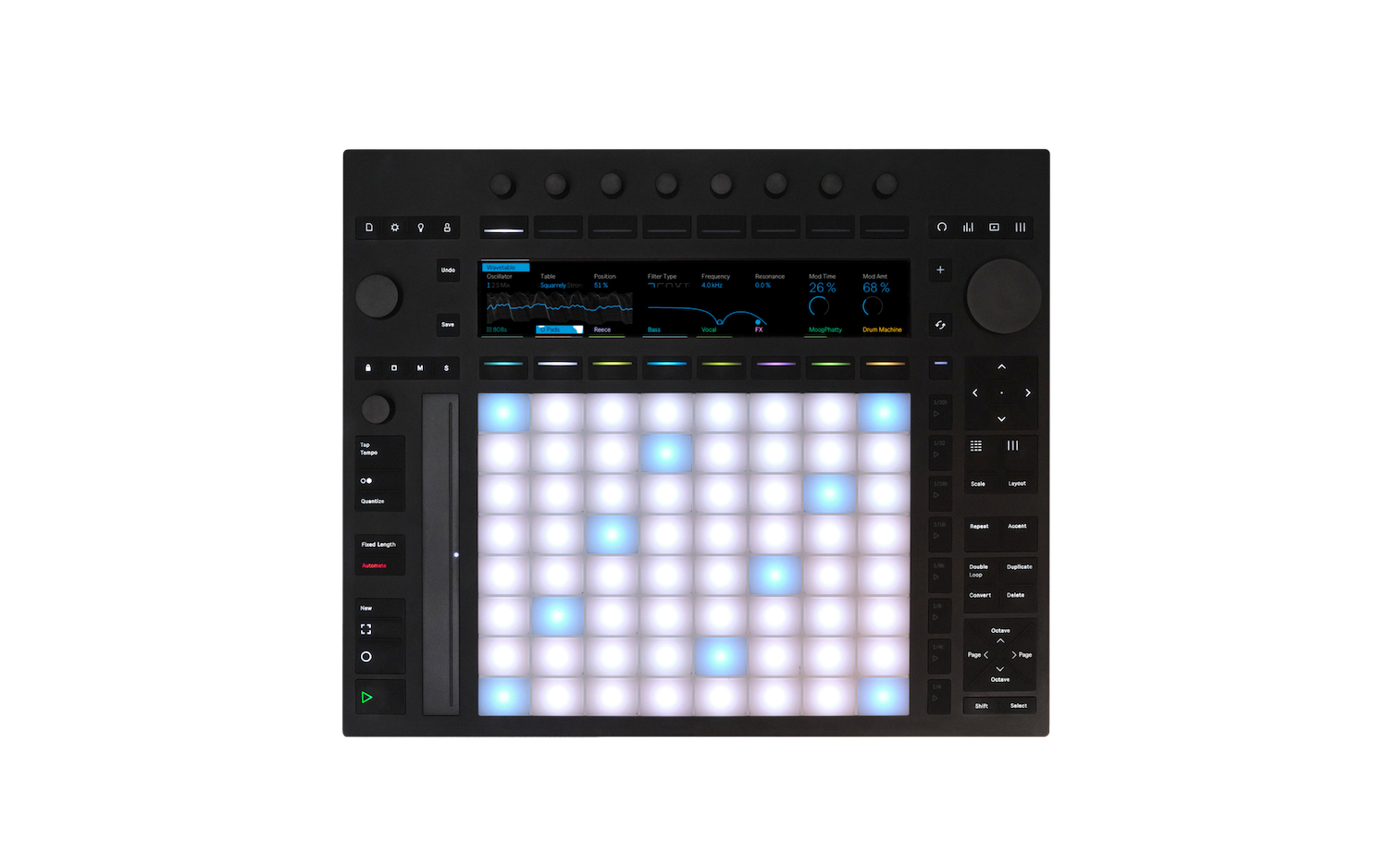
Ableton Push 3
Product Info | Price: From $999 USD
Push is a sound-sculpting behemoth. In its third iteration launched in mid-2023, this is another top option for those preferring to move away from something resembling a keyboard. Available with an upgrade to stand alone unlike any other instrument of its kind, Push distinguishes itself in design and optimization to pair powerfully with Ableton Live, across 64 XY sensitive pads.
Push’s standard note layout is what is referred to as isomorphic, a unique layout which among other benefits, can enable players to venture in and out of key in new ways and more easily memorize chord patterns. One way to think of this is how barre chords work on a guitar, with the same shape moving up and down the neck rather than a piano with black and white keys. Other instrument-makers have joined in this approach such as Lumatone in 2020, and while note layout is customizable in Push, it is a major feature which would be a waste to not embrace if you opt for the instrument.
Ableton emphasizes the ability of this instrument to be so expressive that it can truly mimic fretless strings and 'dynamically detailed wind parts.' Bringing traditional and MIDI instrumentation closer together in this way brings more accessibility and creative power to the player. Although this is a feature many MPE instruments with pitch bend and slide capabilities will aim to sell you on.
While Push 3 is an incredible tool, in particular for performers, playing through pads – and attempting to do so expressively – is not the medium for everyone. The tactile experience of playing on a board-style instrument, in particular one with continuous surfaces, stands in major contrast with performing the same thing on a set of pads. If you’re considering either Push or Linnstrument, this is a crucial part of that decision to give you the most authentic method of expressing your art.
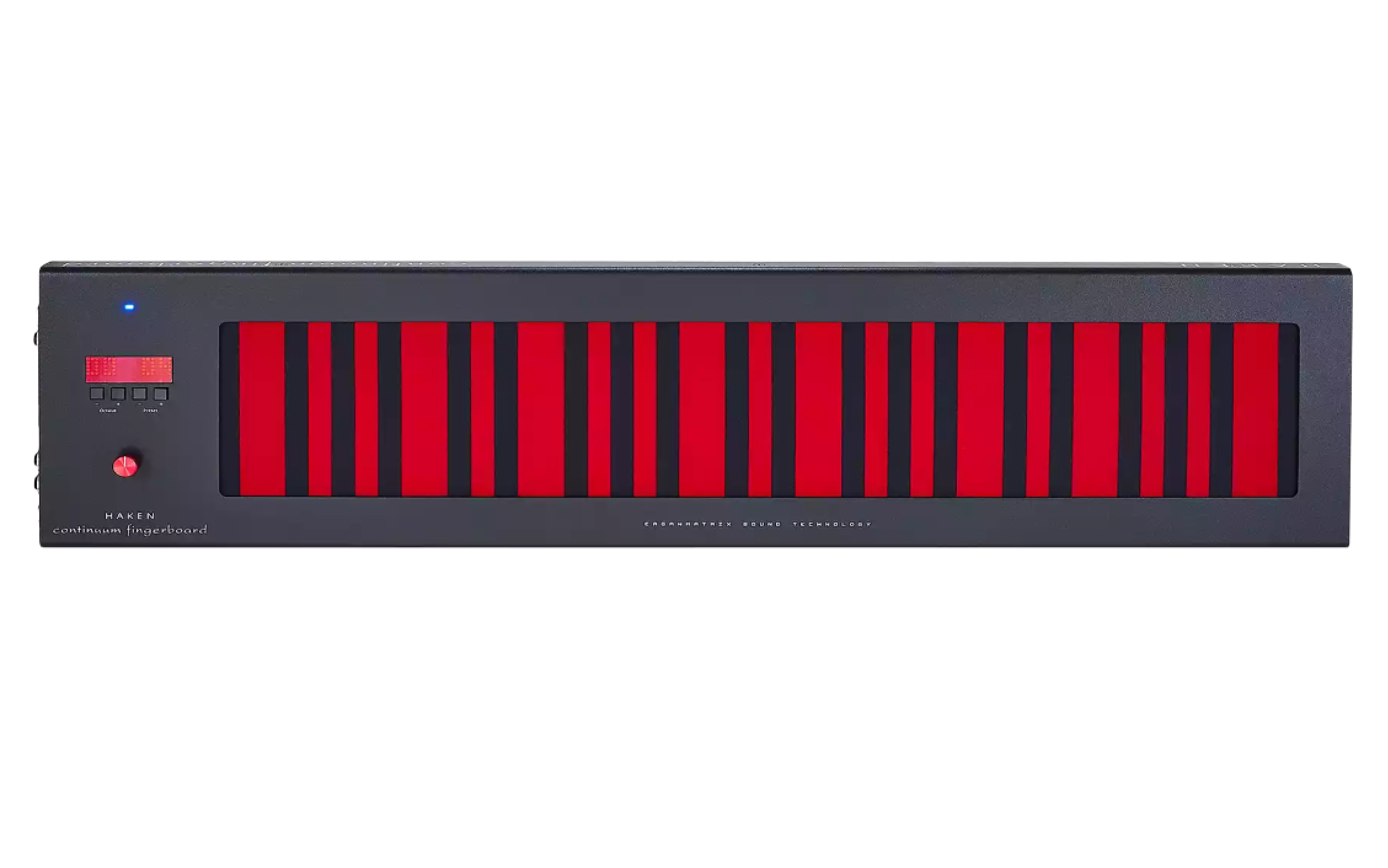
Haken Slim Continuums
Product info | Price: From $4,910 USD
Lippold Haken took a huge step in retiring their original releases in 2020 to prioritize the slim model. While this is by far the steepest price tag of our recommendations, it truly does provide a one-of-a-kind experience. The entirety of the flattened surface, in 46 and 70 'key' sizes, is scanned every 330 microseconds to ensure precise responsiveness to your playing. Vibrant in color and sleek in design, the promise of a Continuums to 'provide you with a connection to your instrument unlike any other' really holds true.
What also holds true with Haken is how genuine their branding is. This is the instrument we mentioned above that very honestly emphasizes the learning curve, being like an entirely new instrument. They say that these fingerboards "can give you that edge you are looking for in sound, expression and creativity. We do not say it will be immediate, although the continuum sounds great and is fun and accessible when you first start playing." This is a truly applaudable avoidance of overly-heavy marketing language which most companies choose to lean into.
The control over your sound with Continuums is incredible, powered by the EagonMatrix. It’s an internal modular synth also available as Eurorack hardware. While a simple way to describe it is displaying sources on the left, and the destinations on the top, there’s no hiding that the software interface is complex. If you have the budget, and the discipline to dive into this journey of learning an instrument unlike any other, a Haken product may be for you.
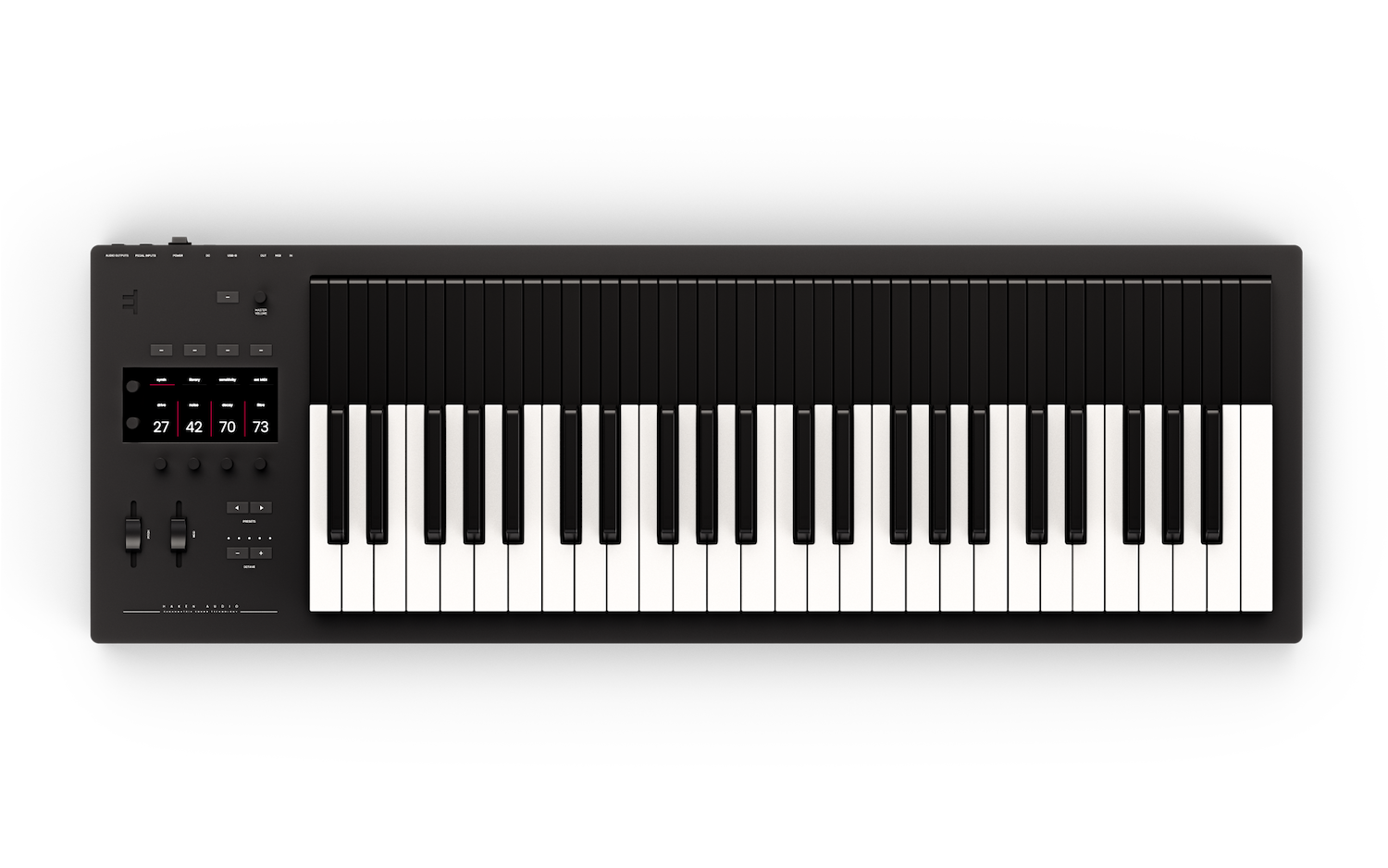
Osmose by expressive e
Product Info | Price: $1,799 USD
Finally, we have the newest of MPE instruments to hit the market. Osmose was released a few months following the RISE 2, and represents the most traditional looking MIDI controller able to leverage substantial MPE expression. Four gestures (tap, press, pitch, and aftertouch) are controllable via what expressive e refers to as Augmented Keyboard Action. Noteworthy that Aftertouch functions differently here than the 5D of RISE 2, as it’s not a completely independent gesture but instead a second stage of Press. See it demonstrated.
Notably the sound engine of this product, boasting over 500 presets, is what’s known as the EagonMatrix. You are not misreading, as this is in fact the same engine as the Continuums. While it certainly must have come with a price tag, it’s also quite nice to see this level of resource sharing as MPE continues its early history. We look forward to the first expert of both instruments, who can perhaps find unique ways of using them together as they share that same engine.
Another exciting feature is the ability to edit the distance between the keys. This means you can be playing chords or a bassline with your left hand, and a lead melody on your right, with a far wider octave range than a traditional keyboard offers. You can also further 'split' these sides by affecting them differently, for example sustaining chords on one side and enabling legato on another. With semi-weighted keys and a look just like a keyboard – this is a powerful, and possibly disorienting shift in what you expect to hear, and what you can actually generate through this instrument.
Pitch bend is set as one semitone as a default, which is quite standard for these instruments. What is not standard, is the ability to adjust that to from ¼ semitone to a whopping 96 semitones. This is one of the widest, if not the most extreme range of pitch bend of any comparable MPE instrument – including RISE 2, which offers a range of 1 to 12 semitones. Though it’s one thing as a marketing statement, and another to be functional. What do you think could come of maxing out a pitch bend of that caliber? Don’t forget, these are the features that ultimately set the price tag, and could above all help sway you towards or away from a particular instrument.
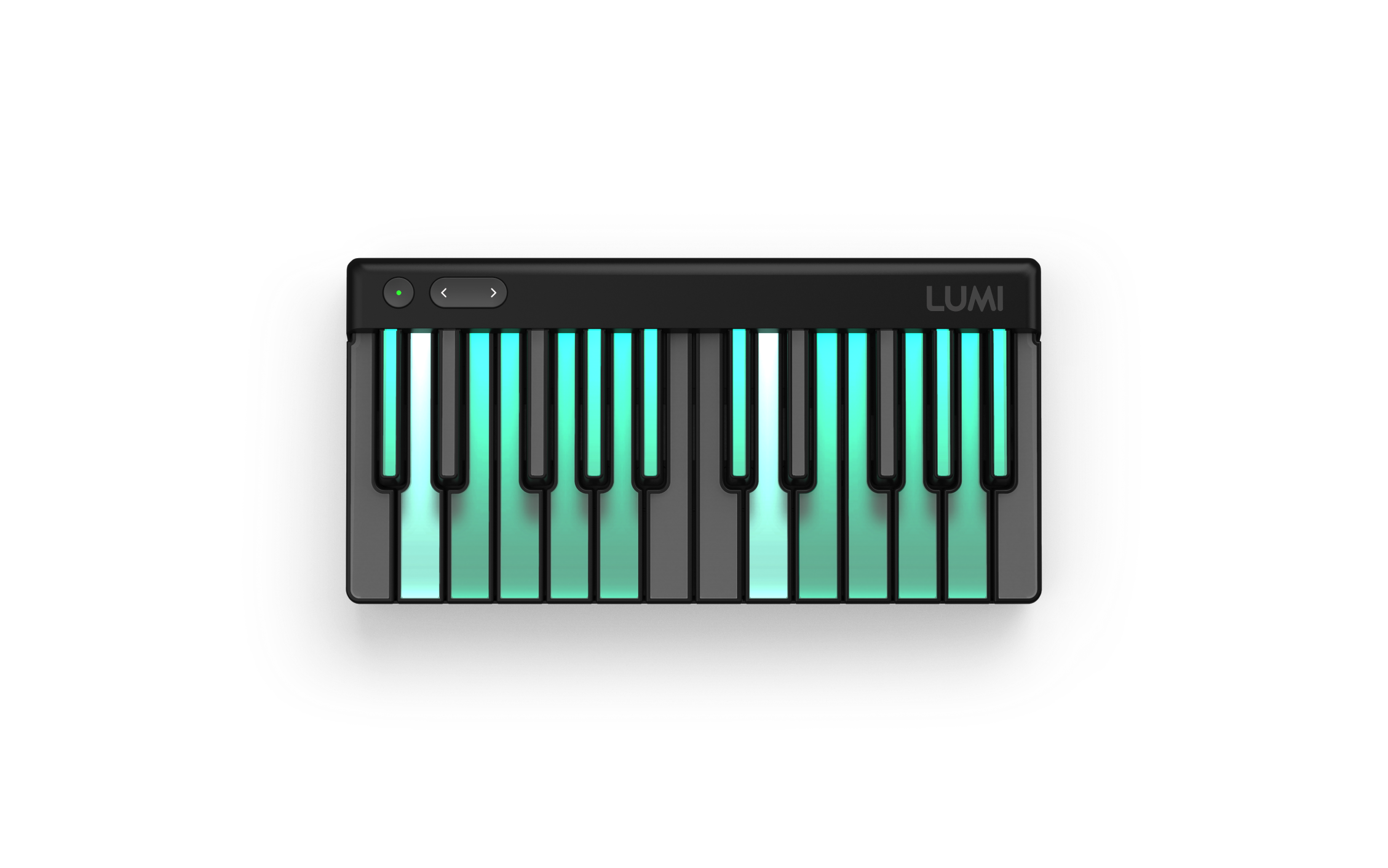
Is there really an affordable way to experiment with MPE?
If these instruments are not accessible to you right now, and since they are not so easy to find in music shops, there are certainly a few options. In addition to LUMI Keys Studio Edition mentioned previously, Haken offers a Mini version priced slightly below the cost of a Seaboard RISE 2. Still, this is not quite distinguished enough to be called affordable.
Enter the Artiphon Orba 2, an exhilarating, strange handheld instrument unlike any other for under $200. Now we’re talking!
Early developer of MPE Keith McMillon is also a great option to explore. Browse his range of affordable MPE and non-MPE options, though take note that some tend to go out of stock quickly. If you can’t find the one you want, resale platforms like Reverb may be the way to go.
Then there is the Joué J-Play series, which provides a very accessible entry point to MPE. This flexible series is particularly incredible as it allows the player to escape the need to constantly buy, sell, and swap for the instrument which might be the best fit for you. As much as many producers love their Volcas and Pocket Operators, these are key examples of inflexible products which are not really meant for life in the way that MPE instruments can be.
We could go on forever about the exciting options to level up your sound with MPE. As put by trusted music technology YouTuber Benn Jordan, these instruments are “paradigm shifting for electronic music" and can be unleashed for any genre of music.
Suggested articles
Join the ROLI community


